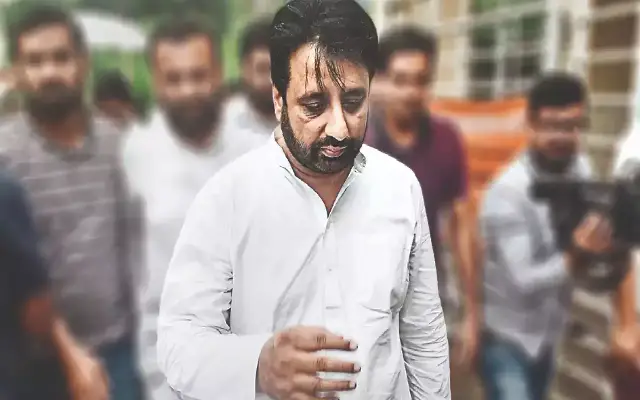
A study, published in the open-access journal eLife, conducted by leading Indian and international experts and based on data collected from India’s ambitious Million Death Study. says that an estimated 1.2 million people have died from snake bites in India in the past 20 years. That’s an average of 6000 a year. 50% of the victims are in their prime – between 30 and 69 years old and 25% of them or around 15000 are children. Half of the deaths occurred in the monsoon season between June and September when snakes are known to come out. And most victims were bitten in the legs. These are alarming statistics. According to the World Health Organization (WHO), snakebites claim more than 100,000 lives globally. India sees 45,000 snakebite deaths every year, finds the 2011 ‘Million Death Study’.
Interestingly, the Minister of State for Health and Family Welfare, Ashwini Kumar Choubey, came up with much lower figures in the Lok Sabha — 689 deaths only in 2018. This might be because victims rarely reach the hospital. “The poorest of the poor working in farms get bitten, and they rush to quacks or traditional healers. We need more studies and ground data to understand the correct figures,” says Romulus Whitaker, founder, Madras Crocodile Bank Trust and Centre for Herpetology in the Hindu. Whitaker is one of the authors of the ‘Million Deaths Study’, and says that prevention is as simple “as carrying a torchlight with you at night, not sleeping on the floor, and using a mosquito net. But it’s easier said than done.”
The elife study also found that between 2001 and 2014, some 70% of the snake bite deaths occurred in eight states – Bihar, Jharkhand, Madhya Pradesh, Odisha, Uttar Pradesh, Andhra Pradesh (including Telangana, a new state) Rajasthan and Gujarat. The average risk of an Indian dying from snakebite before reaching 70 years is approximately 1 in 250, but in some areas the risk approaches 1 in 100, the study says.
The researchers say farming communities living in villages carried the highest risk to snake bites during the monsoon season.
Compare them with the world: Around 5.4 million are bitten each year while the no. of fatalities is around 60,000 a year according to the WHO. Around 400,000 are disabled or disfigured. Indias rates in comparison are high. According to the study Russell’s vipers which feed on rodents so stay close to human habitats, kraits and cobras were responsible for most deaths. The remaining deaths were caused by at least 12 other species of snakes.
The issue at hand is medical care. Most of the deaths occurred because of a lack of immediate medical care and the administration of antidotes. The Indian krait is normally docile during the day but becomes belligerent at night. It can grow up to 1.75m (5ft 9in) in length. The Indian cobra typically attacks after dark and causes internal bleeding, which requires immediate medical attention.
WHO says snake bites are a global health priority
Snake bites are now a global health priority, says WHO and its strategy reflects the same. In May 2019 it released its strategy document to deal with the crisis. The WHO classified it as a tropical disease that affects 1.8–2.7 million people each year, claiming 81 000–138 000 lives and causing 400 000 cases of permanent disability. The objective of the strategy is to halve the numbers of deaths and cases of disability due to snakebite envenoming over the next 12 years through a programme that targets affected communities and their health systems, and by ensuring access to safe, effective treatment through increased cooperation, collaboration and partnership at all levels.
The strategy was developed by a 28-member panel of global experts in consultation with WHO regional offices, the scientific and research community, health foundations, advocacy groups, and stakeholders. Given the importance of prevention, improved community education, and empowerment and effective first response, the strategy commits to engaging communities to achieve these goals.
In parallel, WHO will work with countries to strengthen health systems towards achieving the Sustainable Development Goals and its related targets including improving health and well-being and reducing inequity.
A central objective will be the need to ensure access to safe, effective, and affordable treatment such as anti-venoms and ancillary medical care. Improved and strengthened production, supply, and distribution of life-saving antivenoms and other commodities needed to treat snakebites will be prioritized. The WHO will also work to encourage research on new treatments, diagnostics, and health device breakthroughs that can improve treatment outcomes for victims and hasten recovery.
In India
It’s known now that the majority of snake bites occur in the fields of rural India by the big three of the snake kingdom – Cobras, Kraits, Vipers. But what is the strategy to deal with them? The strategy has to deal with awareness and education. An article by Aswathi Pacha in the Hindu last year quotes Amersan who lives near Chennai.“It must be something I did in my past life; I have been bitten by snakes some five times,” rues Ameresan. We are walking through his lush paddy field in Ponneri, 30 km north of Chennai and Ameresan points to a termite mound. “Every time I get bitten, my wife runs to Nagathamman (Shakti worshipped as a snake). She pours milk on this mound and prays. And every time, I am saved. Our God is truly powerful.”
Apparently, if he feels the need to go in for medical attention he goes to the traditional healer of the village who provides some herbal juice and leaves to relieve his symptoms, and indeed according to Amaresan the symptoms do go away. “He gives me juice made from a root and some leaves. Last time I couldn’t even open my eyes fully. He poured a drop of the juice in my eye and ear. In four or five hours, I was okay.”
But scientists / medical practitioners disagree totally. The article quotes S. Ragunanthanan, chief of the Poison Control, Training, and Research Centre at Rajiv Gandhi Government General Hospital in Chennai as saying. “Anti-snake venom is the only treatment for snakebite with envenomation (when venom has been injected through a bite). It is provided free at all government hospitals. We need to increase awareness among people and get them to rush to a hospital.”
There are other issues involved – Which snake has bitten? Was it venomous? The time-lapse between the bite and the admission to the hospital and the availability of the venom.
As regards the first one Which snake, technology does come in handy on occasions – A picture on a mobile phone can help identify the snake. The time-lapse depends on so many factors – the proximity, support system, and of course the beliefs of the individual and his family as can be seen in the case of Amaresan.
Availability though is another matter altogether. A report in the logical Indian says that a study conducted by the Public Library of Science (PLOS) found out that the snake bites in the country reach its peak between June and September every year. The study also found that more than 97% of snake bites happen in rural India. In India, it was found that almost 50,000 people succumb to snake bites of the 10 lakh Indians bitten, due to inadequate anti-venom treatment. However, it is shocking to know that despite the numbers being so high, the government has never addressed this adversity in the seriousness which this issue deserves. India needs to look into the lack of anti-venom treatments it offers because of inadequate research and venom extraction practices. As of 2017, the Irula Snake Catchers’ Industrial Cooperative Society was the only group to have extracted venom from the most deadly species of snakes – Indian Cobra, Saw-Scaled Viper, Russell’s Viper, and Common Krait. These venoms were sold to biotechnology companies to produce anti-venom for the entire nation. This is not adequate, for a country with 130 crore population. P Gowri Shankar, who is the founder of Kalinga Centre for Rainforest Ecology in Karnataka’s Agumbe, believes that every state should research local species and extract venom based on the predominant species in the region.
The WHO classifies Snake bites as a global health priority. But the Indian Government does not?
The number of fatalities due to Snakebite is significantly and consistently higher than that of the Corona Virus which today stands at around 21000. But those in cities rarely get affected as it is not a snake’s natural habitat. Its a poor man’s disease, so no one cares as much. Its only when the powerful and rich are affected – even the middle class who live in cities are affected that a policy document will be formulated and implemented with haste, conviction, and consistency as it is being done in the case of the COVID19 virus.


















